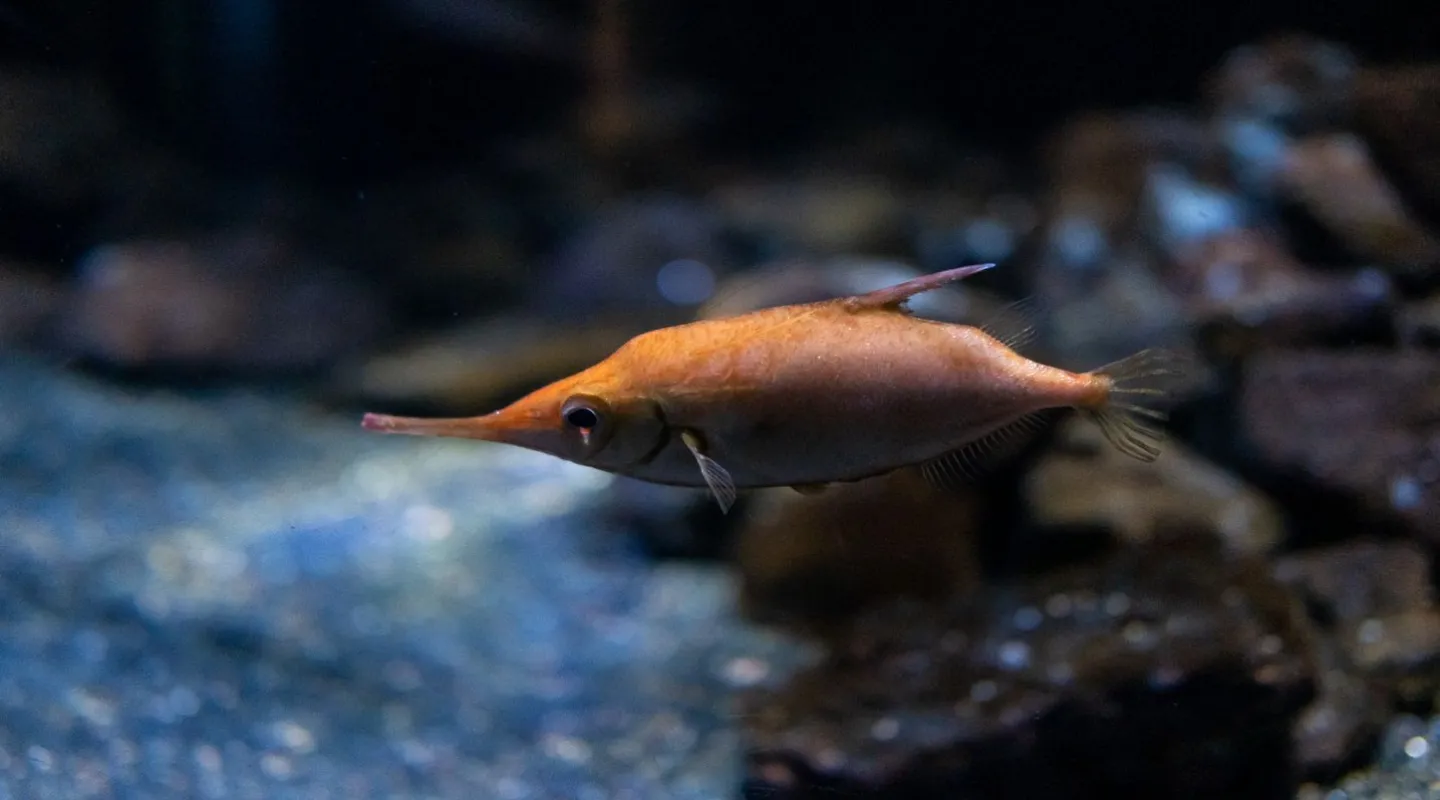It uses its tube-shaped, toothless mouth to suck in its prey.

Identity card
Slender snipefish
- Scientific name:
- Macroramphosus gracilis
- Family:
- Macroramphosidae
- Class:
- Actinopterygii
- Phylum:
- Chordata
- Year of description:
- Linnaeus, 1758
- IUCN Status:
- Least Concern
- Distribution:
-
Indo-Pacific Ocean, Mediterranean Sea, and Eastern Australia.
- Habitat:
-
It is found in the world's tropical oceans at depths of 50 to 500 m.
- Size:
up to 15 cm
- Diet:
-
Planktonic crustaceans







